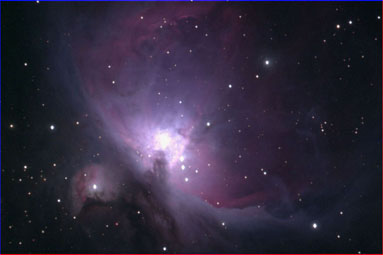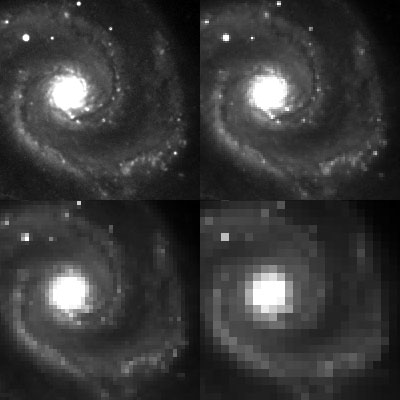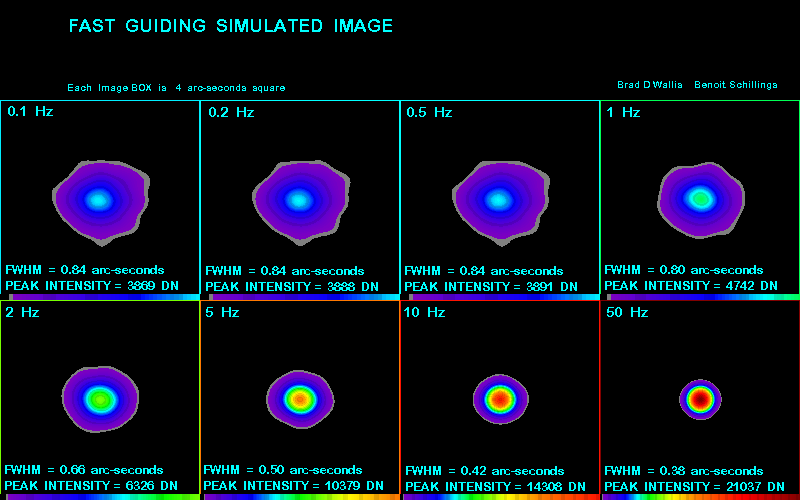Some Examples of IDL at work on Images
TRI-COLOR
 A Tri-Color of M42 using SBIG's ST-7 CCD camera
and a 4-inch AstroPhysics ED Traveler
R,G,B Images processed, scaled and assembled using IDL
A Tri-Color of M42 using SBIG's ST-7 CCD camera
and a 4-inch AstroPhysics ED Traveler
R,G,B Images processed, scaled and assembled using IDL
An IDL routine was written that simplified the image alignment process into a
"Point-and-Click" operation. A Background level was calculated for each image using
a "Point-and-Click" interace, all three images were handle identically as the images
were scaled using a user selected exponential factor. Finally, the three images
were combined into a single TIFF file and output.
VISIT our HINTS Page for a discussion of Tri-Color w/ CCDs
IMAGE MANIPULATIONS
 A shot of M51 by Benoit Schillings
using SBIG's ST-7 CCD camera and a C-8.
A shot of M51 by Benoit Schillings
using SBIG's ST-7 CCD camera and a C-8.
This Image has been binned in 2x2 , 3x3 and 4x4 using IDL's REBIN function
to show the resolution degradation effects when bigger and bigger pixels are used
( i.e. using pixel sizes larger than the optimum image sampling size. The four
new images were then recombined into a single new image.
Effective Pixel Sizes shown are: 9 microns ( Upper Left) , 18 microns ( Upper Right),
27 microns (Lower Left) and 36 microns ( Lower Left).
VISIT our HINTS Page for a discussion on pixel size optimization.
DATA SIMULATIONS

An image simulated from seeing data to show the effects of making telescope
guiding corrections at different fequencies. This image was constructed as part
of the study that led up to the creation of an ACTIVE OPTICS guiding system
that can be used on small telescopes to improve imaging resolution during
long exposures.
To create this image, a pseudo star was created (in IDL) which was 0.5 arc-seconds
in diameter (FWFM). A file of high frequency seeing data (obtained by Benoit Schillings
using the ST-7) was then used to provide the X-Y coordinates for this star image
as a function of time. A correction was then applied at various interval to re-center
the star image. The images were all co-added with the after applying the recentering
corrections and the resulting images were created. Finally, the results from various
recentering runs were recombined into a single image.
This image, created by this simulation run, was the crucial piece of evidence needed
to convince us that the AO system was a worthwhile effort to explore further and to
construct a prototype AO device.
VISIT our discussion on this Active Optics study.
When I figure out HOW TO, I will place my own IDL routines here for use in reading
FITS images , statistcial studies, scaling IDL images, assembling RGB images,
and photometric studies.
There are numerous other examples of IDL data crunching that can be found in various
professional papers by Brad Wallis. PPS photometric studies of Voyager 1& 2
Data, PPS UV Mapping of Triton, Magnetometer Data from Voyager 1 at Titan ,
IO Occultation studies and more.
Return to the Wallis Home Page.



